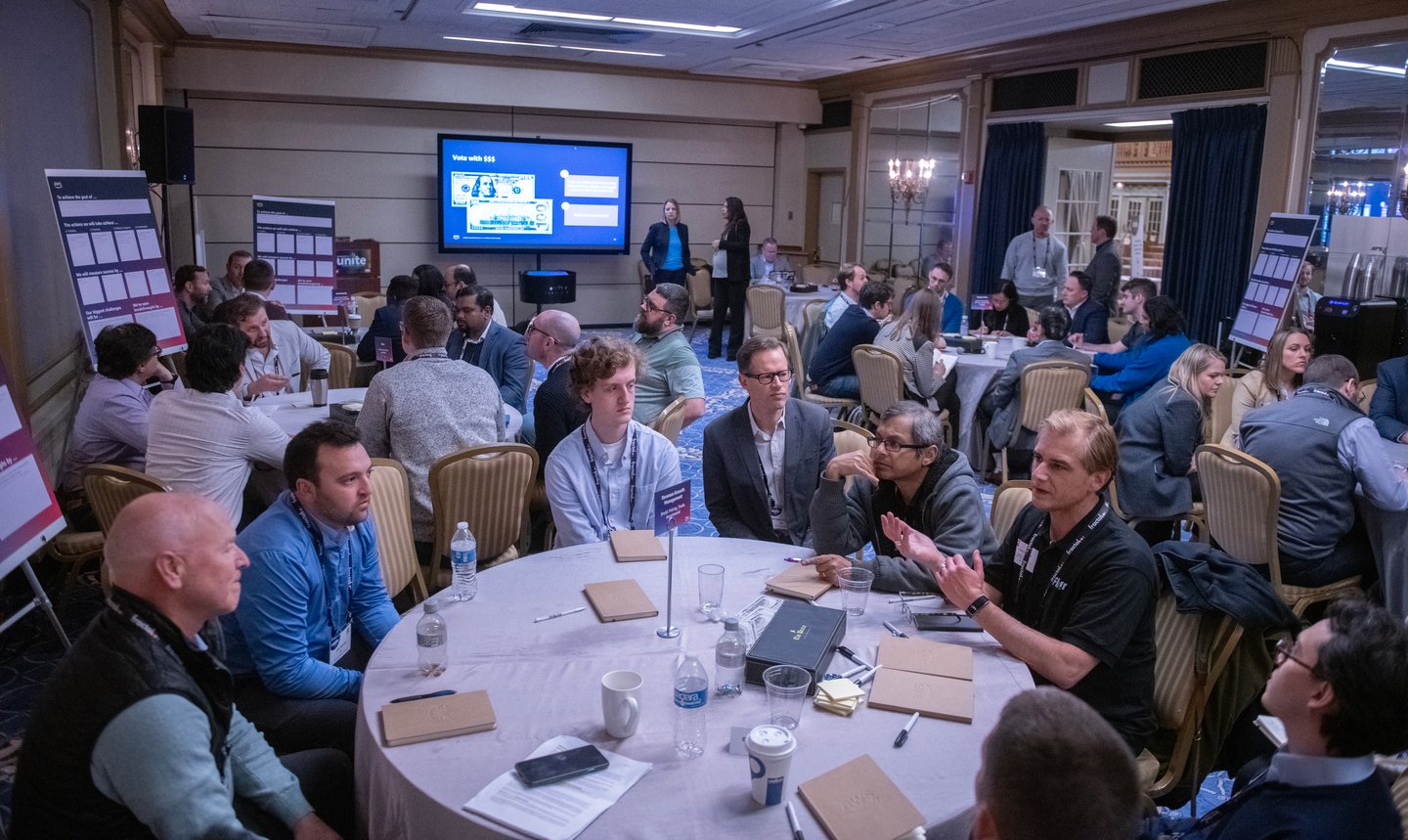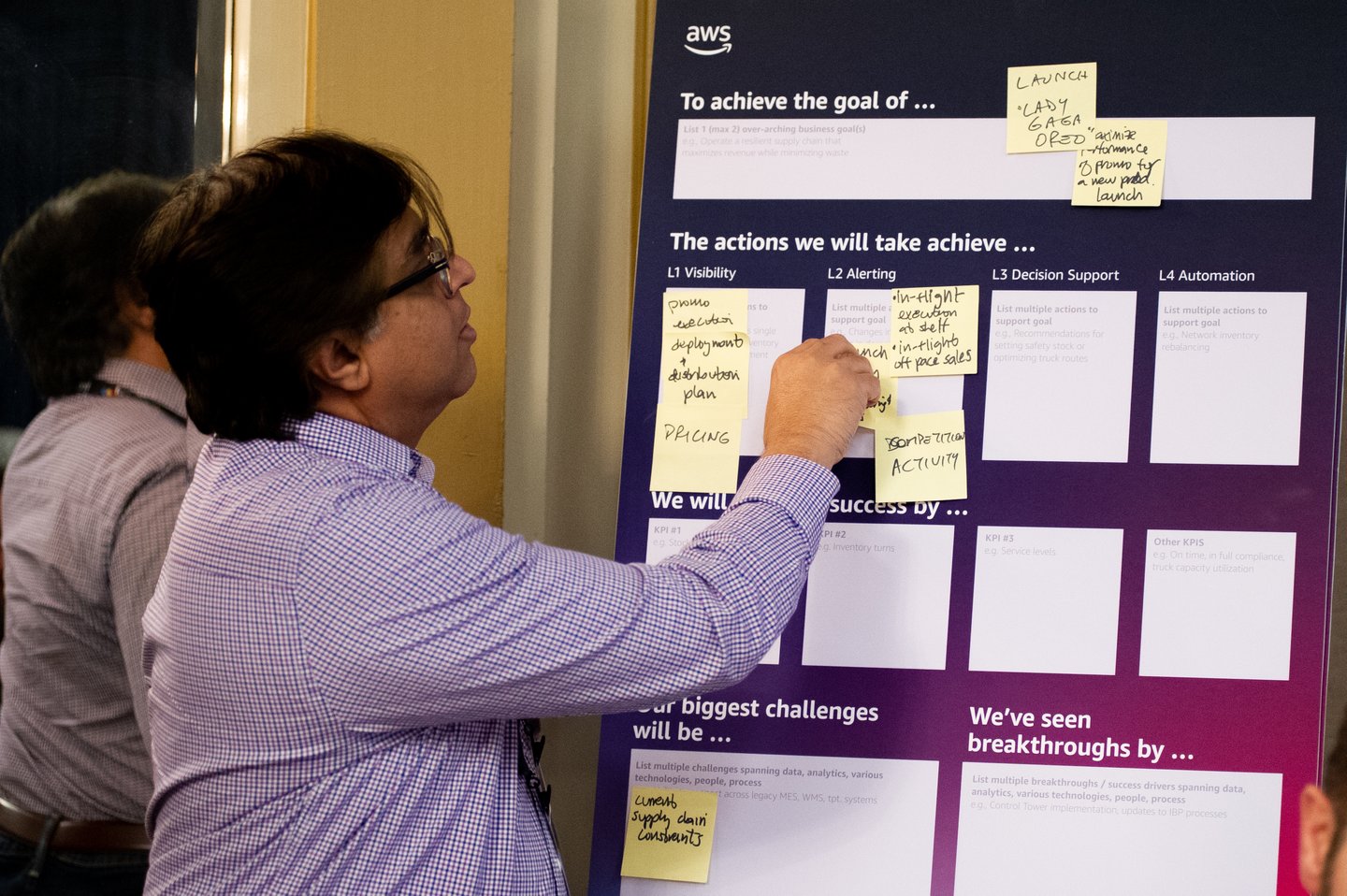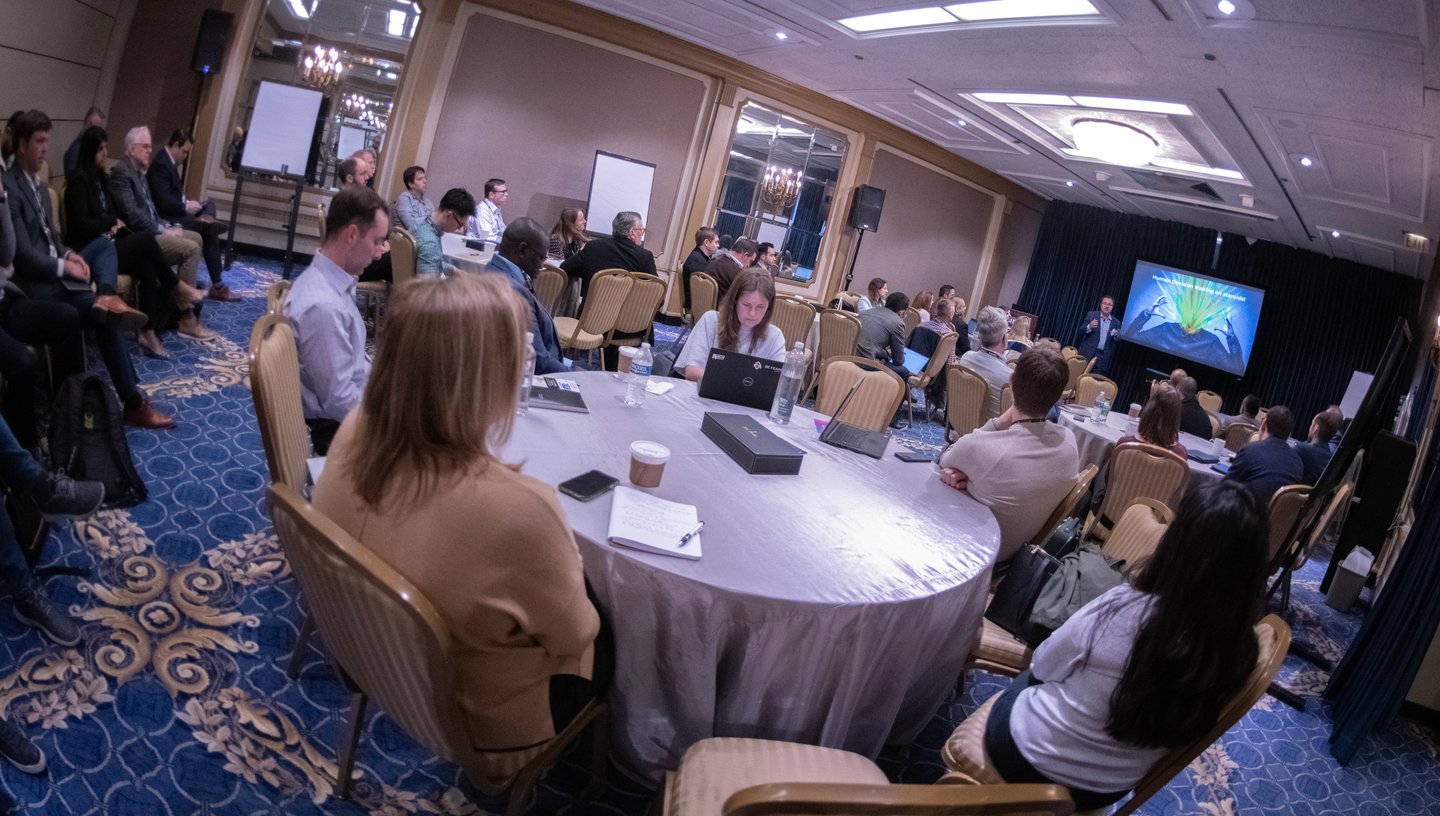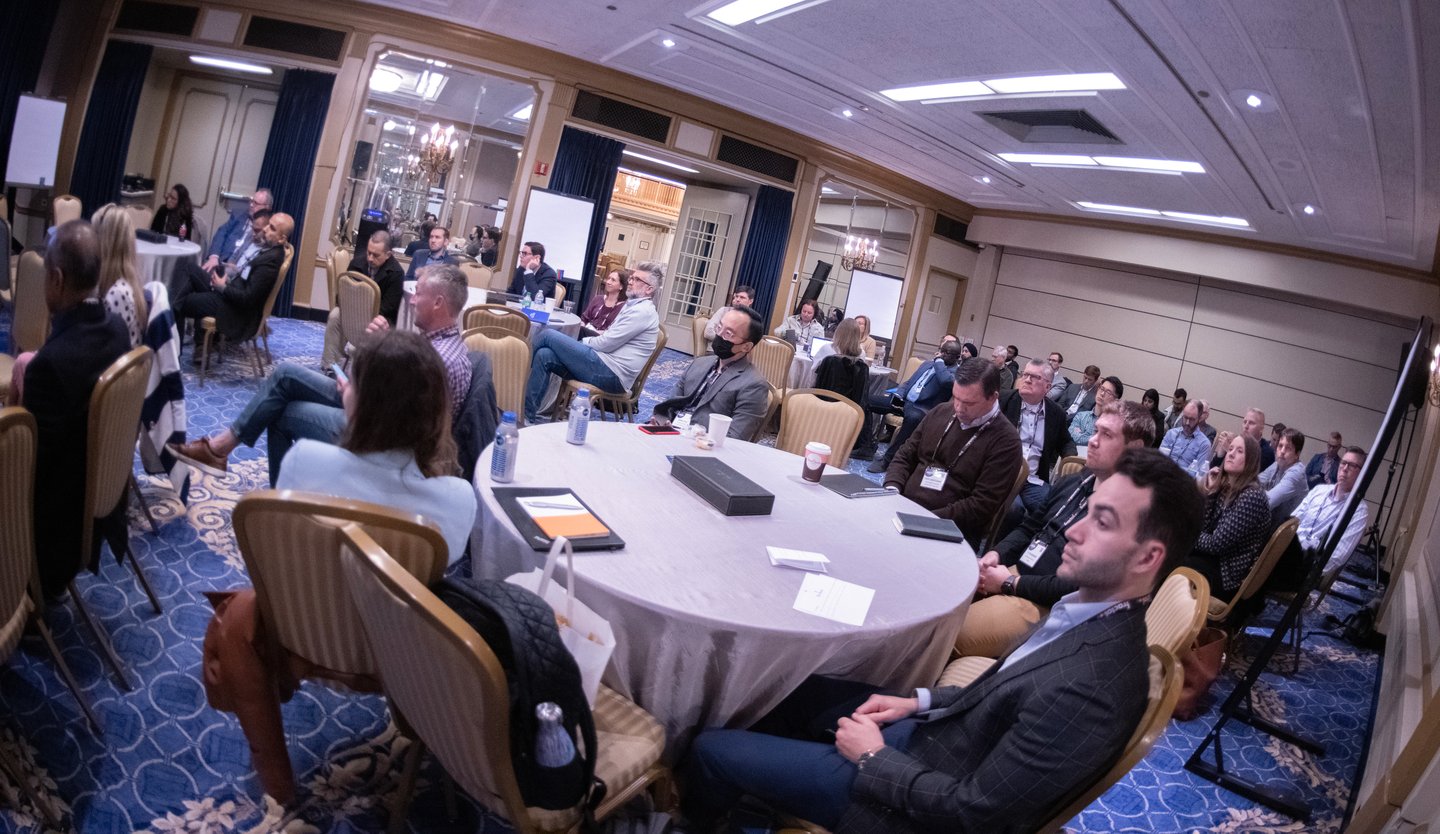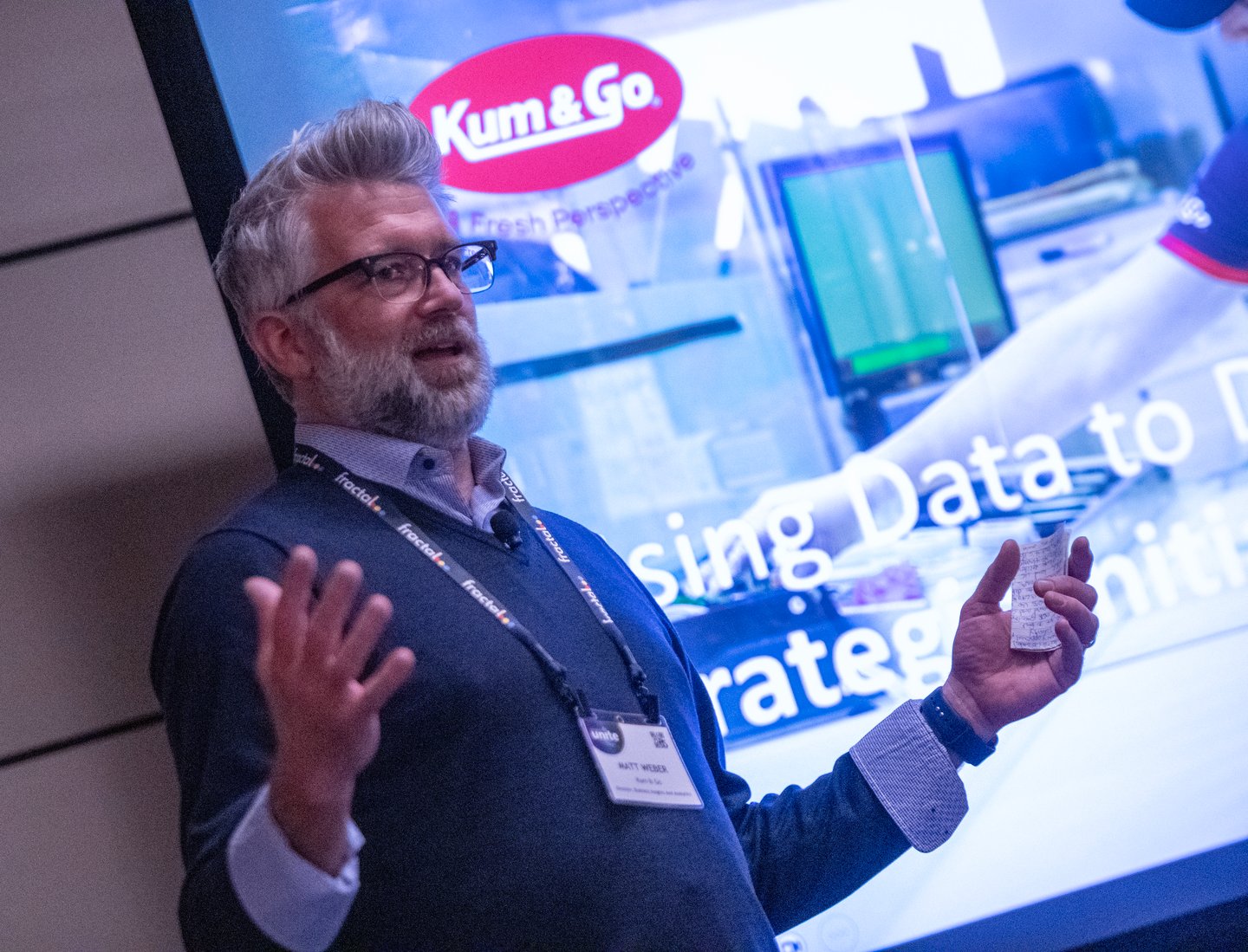Analytics Unite Brings Data to Life During Captivating 10-Year Anniversary Celebration
Analytics Unite 2023 was one for the books.
The highly attended and regarded event, this year celebrating 10 years of innovative networking and education over three days in Chicago at the Drake Hotel, gathered the top influential leaders and experts across the consumer goods and retail industries.
With a theme of Bringing Data to Life, brands RIS and CGT of EnsembleIQ hosted captivating and timely sessions across a variety of valuable topics, including sustainable data partnerships, cross–domain data, data-powered predictability and personalization, and more.
For those who missed the event, and for those who want a refresh on some of the major topics discussed throughout these three days, we’re excited to provide highlights from all sessions below, with links to some of our expanded coverage.
Wednesday, May 3
Workshop: 5 Steps to a Winning Enterprise AI Strategy
Analytics Unite kicked off with a 90-minute workshop session that showcased steps for developing an AI strategy from concept-to-carton. As part of this, a panel discussion highlighted how The Kraft Heinz Company is having success by placing digital capabilities, including artificial intelligence, at the center of everything it does.
Participants included Gustavo Mendonça, global head of revenue management digital solutions, Kraft Heinz; Caio de Oliveira Santos, VP, head of RGM, North America, Kraft Heinz; and Aakarsh Kishore, partner, head of customer success, TheMathCompany. They discussed what’s required when it comes to successfully executing upon such modernization strategies, and in what likely resonated across the room, it chiefly hinged upon getting key stakeholders across all levels on board.
De Oliveira Santos noted that 90% of the time spent as a leader is focused on change management because “that’s what’s going to make it work.”
“Get your top five skeptics and put them in a room and whiteboard with them,” he advised. “Once they’re on board and they understand — and they’re 80-90% of the way there — then it’s [easy to sell the initiative] in the organization.”
Share Groups
From Visibility to Automation: A Practical Approach to Building Data Products
A host of consumer goods and retail leaders gathered for a closed-door share group led by Amazon Web Services on the challenges retailers and consumer goods organizations face as they move to transform their enterprises through data and analytics.
During the session, CGs and retail executives chose the “analytics adventure” they wished to explore, taking a deeper dive into solving data and analytics problems in the areas of supply chain, manufacturing, marketing, sales, and revenue growth management. Tasked with developing a use case for their respective area of interest, teams worked to create a data product roadmap, identifying key milestones in the process, including action steps, success metrics, roadblocks, and breakthroughs.
Leveraging a Decision-Back Approach to Drive Analytics Activation and Increase ROAI
During the interactive “Leveraging a Decision-Back Approach to Drive Analytics Activation and Increase ROAI” share group, presented by Cloverpop, Analytics Unite attendees were privy to a breakdown of the tremendous impact decision-making has on the success of a business. This includes not only identifying decisions that must be made, but also measuring them, analyzing their impact, and revisiting outcomes in order to improve upon them — particularly through the use of decision intelligence.
During the 90-minute interactive session, participants were surveyed on their decision intelligence maturity, with results benchmarked against the group and the broader industry. They also broke into groups with their peers to address the key priorities in increasing the value of their analytics efforts; their organization’s decision-making effectiveness; and the reasons why they’re not using analytics to focus on decisions.
Thursday, May 4
Bringing Data to Life Through Sustainable Partnerships
For Walgreens Boots Alliance (WBA) to be successful in its purpose of helping consumers live more joyful lives through better health, the retailer needs successful, sustainable partnerships that drive results, Melissa Salo, WBA’s chief procurement officer, told attendees during the event’s keynote presentation.
Salo explained how procurement plays a role in connecting data points to deliver value across the care continuum within WBA’s health care assets, and that to innovate, WBA can't be mired down in tactical relationships
“We have a ‘Buy more. More renewal.’ mindset, and that's not what our customers are looking for,” Salo said. “What we need to do is partner on innovation. We need to understand how we collectively will improve health outcomes and improve the lives of patients and customers.”
Read the extended coverage here.
A Labor of Love: Building Advanced Analytics Capabilities for Retail Media Networks
Fractal’s Sangeetha Chandru, chief practice officer, retail, hosted a discussion titled “Labor of Love: Advanced Analytics Capabilities for Retail Media Networks (RMN)” that explored the evolution of retail media and the advanced measurement and analytic capabilities these networks offer brands that are looking to connect with customers across digital channels. The session featured Claire Wyatt, vice president, business strategy and marketing science for Albertsons Media Collective.
The conversation covered retail media’s evolving capabilities of curating ever-more personalized customer experiences through the capture of first party-data. Wyatt pointed to several win-win retailer/CPG examples in which clients utilized AMC’s vast and sophisticated network of analytics to create successful product programs — their success measured through a key metric, Incremental Return on Ad Spend.
The programs were highly successful, Wyatt explained, because they created a frictionless customer journey across traditional, online, and in-store channels for a seamless customer experience.
Chandru echoed the idea that analytics is the differentiator, and that retail media networks will not work if not for the driving force of the analytics engine behind them.
What’s next for retail media networks? Wyatt believes RMNs must be champions of standardization across the industry to become less of a “wild west.” And of course, there’s the role of AI, which Wyatt predicts could “absolutely disrupt the business model in a fun way,” when it comes to generative creative, media optimizations, and audience targeting.
How Data and Analytics are Leading to Healthier Food Choices
During the breakout session “How Data and Analytics Are Leading to Healthier Food Choices,” Matt Weber, Kum & Go’s director of business insights and analytics, and Johnny Stoddard, MarketDial’s chief customer officer, spoke about how the retailer used data and analytics to drive a strategic initiative for a healthy food launch.
Kum & Go is a Midwestern convenience store chain with about 400 stores in 13 states, and the chain was recently acquired by Maverik. The retailer began its healthy choices initiative by conducting analysis to determine the consumer to which healthy food would appeal along with studying first-party data from its loyalty program to discover if these consumers were already shopping at its stores.
Kum & Go partnered with MarketDial to test and understand the success of this initiative. MarketDial designed an A/B test analyzing Kum & Go’s first-party data in which it selected a set of stores to implement the healthy food initiative. The analytics problem statement was: How to design a test where it could reduce bias, but also work within practical business constraints? Some of the constraints were time, speed to market, test size, test length, and expense. Broadly speaking, the solution was to design a non-biased sample group and then pick a well-matched control group to measure against. MarketDial analyzed data to find a non-biased sample of 30 stores that would represent the different formats of the 400-store fleet.
Kum & Go started with a traditional convenience store food program, and conducted construction to change the store layout to accommodate made-to-order food along with the new equipment and technology to retail it. Assortment changes in the center store were also necessary to compliment the new food program. Additionally, a complete app redesign was needed to accommodate made-to-order food retailing.
“The big reason you test is the unknowns like what are the unintended consequences — the things you didn’t anticipate,” Weber said.
In 2021, Kum & Go started with an operational test in one of its Des Moines, Iowa, stores to determine construction plans and equipment. The retailer then began a full brand refresh and store remodel along with the made-to-order and grab-and-go healthy food product launches in its 30 designated market areas for the next 26 weeks.
“One of the great parts with test and control is we didn't just see an impact to the food,” Weber said. “We could measure impact to other categories. For instance, which categories were impacted positively or negatively? And it really gave us some insights into when we go into that next round of what do we need to do?”
For example, cold fountain sales were impacted because the station was closed for a long time during the remodel. Kum & Go was able then to adjust the remodeling schedule. Kum & Go also showed through its loyalty program data that a huge shift to pizza occurred, so the retailer expanded grab-and-go options in its made-to-order initiative. Signage and equipment also were adjusted based on data.
In the second phase of testing, Kum & Go conducted some ethnographic studies to examine customers’ experiences. What the retailer found was one of the greatest barriers to trial of the new food program was habits and mission-driving shopping. In turn, the retailer created a little bit of friction to motivate consumers to notice the new menu and food program. Kum & Go will be moving into new markets this year and will be optimizing its kitchen and staffing after insights from its trial.
“If every idea that we had worked, then you wouldn’t need to do A/B testing,” Weber said.
Building an Analytics Organization With a Value-First Mindset
The breakout session “Building an Analytics Organization With a Value-First Mindset” shed light on designing an analytics organization with such a mindset, through examples across customer execution, marketing, and supply chain. Deepak Jose, global head and senior director of ODDA Analytics Solutions, Mars Wrigley, joined Kishor Gummaraju, chief customer officer, Tiger Analytics, to discuss the learnings from the experiences of the last few years.
Gummaraju spoke about how the CPG world operates in a world of silos and presented a framework. “No company in this world has one application for the entire supply chain,” he said, and urged the audience, “never buy any analytics solution that is proprietary. You should be able to expand and double up on it.”
Jose began noting that “we believe the world we want tomorrow starts with how we do business today.”
“We always used to start with data,” he noted. “When we started our journey at Mars, we wanted to flip the pyramid.” In this value-first mindset, Mars started with the value they wanted to achieve and worked toward answering what is the data you need to do so. This is the foundation of how Mars is building a value-led organization.
He also touched on how responsible AI is non-negotiable. Mars has seven principles around this, including an AI code of conduct; inclusion and diversity in talent; privacy, security, and ethical collection of data; and more.
To end, he noted: “My call to action when you go back is find that one area you are inspired with and do it really well and you can transform your organization.”
Overcoming Market Uncertainty to Capture Effective Planning and Growth Opportunities
During the breakout session “Overcoming Market Uncertainty to Capture Effective Planning and Growth Opportunities,” attendees learned how advanced predictive planning (APP) might be integrated into current business processes to drive better decision-making, remove blind spots, and signal leading indicators when forecasting.
Danielle Marceau, principal economist and director of analytics for Prevedere, shared her thoughts on what she termed a mild economic recession affecting the second half of 2023 and first quarter of 2024, and how enterprises might adapt their planning in light of temporarily weakened consumer spending and slightly elevated unemployment numbers.
Marceau asked leaders to consider what these macroeconomic trends might mean for their business with core questions:
- Will these economic trends affect our business, and if so, when?
- Will our core consumer be affected by these trends, or are we in a niche sector where our customer is largely unaffected by these developments?
Advanced predictive planning allows leaders to “see around the corner” and take a more holistic approach to advanced forecasting and planning, Marceau noted, by “bringing an external perspective to the business and integrating with data we already know.”
Marceau cautioned that incorporating APP into the forecasting and planning process “can’t just be a one-off, but a life cycle of continuously monitoring and repeating the process so you have a real-time pulse on the world around you.”
Leveraging AI to Break Down the Physical Walls of Retail
In “Leveraging AI to Break Down the Physical Walls of Retail,” four industry experts dug into the topic that’s top of mind for every executive in the retail and consumer goods industry: The potential impact of generative AI and how best to prepare for it.
Christopher Stephens, former head of data at American Eagle, joined Daniel Feldhusen, VP, AI, and data solutions at Eviden, and Jacque Istok, VP, Data, VMware, in a discussion facilitated by Michael Jafari, VP, head of Americas sales, resource, and services at Eviden, that was framed as a way for businesses to understand all the necessary perspectives when thinking about upleveling the capabilities within an organization. This includes what the business wants (via Stephens); how organizations can wrangle data and create insights from it (via Istok); and who the partners are that can help (via Feldhusen).
While opinions varied, the discussion was rooted in the foundational belief that today’s retail and CG leaders must recalibrate their business, their tech stack, and themselves to prepare. What’s more, transparency and ethics will be critical to success, as it will ensure customer experiences remain humanizing.
“How is the company protecting the human aspect of the people working here?” Feldhusen suggested companies ask themselves. “This is an augmentation to your existing skill set to give your customer a better experience. You should be spending your time talking to your customers.”
Analytics Solving for Tomorrow’s Disruption
What are today’s consumer goods and retail executives most excited about regarding supply chain changes they’ve seen across both industries in the last few years?
Pradipta Saha, executive director of digital supply chain at Estée Lauder, and Ashok Viswanathan, director of supply chain analytics at Best Buy, both agree that a major supply chain change comes from organizations looking to enhance and evolve their strategy and investing in a more holistic manner so that long-term capital investments create the supply chains of the future.
“The supply chain now has a more important role to play in measuring and providing solutions for all these organizational decisions,” said Viswanathan.
Saha emphasized that it’s not that supply chain teams have changed, so much as priorities are now more geared toward resilience, supply visibility, and, at the core, getting away from functional silos to see everything from the lens of the consumer. It’s about asking, “What is the end-to-end impact of everything you do?”
Read the extended coverage here.
Automating Experiences for Predictive Results
How can companies better leverage data to deliver personalized consumer experiences?
According to Darrin Samaha, VP of marketing at Yesway, automation is a key focus area, and we’re only just now starting to scratch the surface of what it can do in terms of influencing CX.
“When you look at things we’re able to do today that we weren't able to do even three years ago, it’s incredible,” he stated during a panel discussion. “What will we be able to do three years from now?”
Samaha was joined by Mark Edmonson, chief marketing officer, Materne North America, and Andy Walter, strategic advisor, P&G (retired), who moderated the conversation. The three of them discussed their own organization’s data journey, where they stand on the road to predictive analytics for personalized results, and how loyalty programs play a role.
Read the extended coverage here.
The Power of Cross-Domain Data in the New Analytics Economy
“Pursue the problems, not the business cases,” was the first core principle Rob Birse, VP, global advanced analytics and AI/ML technology at the Kellogg Company shared with the audience at Analytics Unite.
Talking about the customer problems that need to be solved is a good way to start the conversation, he said, because “it creates a common language between the analytics and the commercial around your business.“
He pointed to the three horizons the company uses to plan against: now, next, and beyond. A ‘now’ horizon use case focuses on what can be done today to visibly move the needle in the eyes of the stakeholders in the shortest time possible.
The "next" horizon involves enterprise-grade operationalization with a deeper investment in scaling. The "beyond" horizon “brings the shock and awe to your story; it’s the sizzle in your analytics, the shiny object.”
Read the extended coverage here.
Friday, May 5
Analytics Study Breakfast Panel
The final day of Analytics Unite kicked off with the “Analytics Study Breakfast Panel,” where Lisa Johnston, editor in chief of CGT, led panelists in a rousing discussion focused around the just-released 2023 RIS and CGT Analytics Study.
Khurram Moiz, industry lead, retail customer success, BlueConic; Jonah Ellin, chief product officer, 1010data; and Zack Wenthe, CDP product evangelist, Treasure Data, joined Johnston on stage to detail the strategic analytic approaches companies should explore as they retool their enterprises to bring data to life.
Johnston brought interactivity into the room by polling the audience on study questions. To start, she showed study results on what the top areas of focus are for analytics and then polled the audience on their thoughts. The audience was focused most on demand forecasting (23%).
Moiz noted that he was really surprised to see in the study that personalization was low on the priority list. “As you think about nailing down demand for the next six to 12 months, showing up where the consumer needs us to be based on consumer insights is absolutely the flip side of that coin.”
“There’s an incredibly tight linkage across all these things,” commented Ellin. Demand comes from how you’re engaging, promoting, what you’re doing to inspire and entice. “People are looking at ‘What’s the holistic strategy?, What do I need to do to put together a data strategy that’s going to support decisions that are linked together?, and How do I flow that information across?’”
Later when discussing top use cases for AI/ML, Wenthe noted that it’s going to require “more staff, more collaboration amongst departments, you have to have less data silos, you have to be able to bring all that data together so the machines can do what they are meant to do, which is parse, process, and utilize their data.”
Driving Business Outcomes With Data Mesh and Product Centricity
Constellation Brands’ VP of IT strategy and application delivery, Dan Herlihy, and director of data and analytics, Mike Stillman, closed out Analytics Unite 2023 with an engaging session titled “Driving Business Outcomes With Data Mesh and Product Centricity.” The presentation explored the importance of treating data as a product, and the role of product engineering in this journey, spotlighting the domains, platforms, and teams involved in this important transformation from an enterprise data warehouse to a data mesh architecture.
The conversation focused on Constellation Brands’ movement towards becoming a more product-centric organization, driving towards domain-oriented ownership throughout the company by homing in on agile ways of working, strategic partnerships, and identifying key areas of opportunity across the enterprise.
As Stillman pointed out, Constellation Brands is a beverage alcohol company and not digitally native, but has nonetheless been able to leverage its suite of tech tools into “delivering small chunks of value in fast increments with minimal, broader impacts within the delivery ecosystem.”
Ultimately, CB’s data mesh strategy has aligned with the company’s four enablers — domain teams owning their data and publishing as a product; implementing a self-service data infrastructure; decentralizing data governance; and making data accessible and managed as a product — to enable more data transparency.
“This is really about the outcomes,” Herlihy shared, allowing the data product teams to “be able to take advantage of, to move faster, to be more connected to our value stream.”




